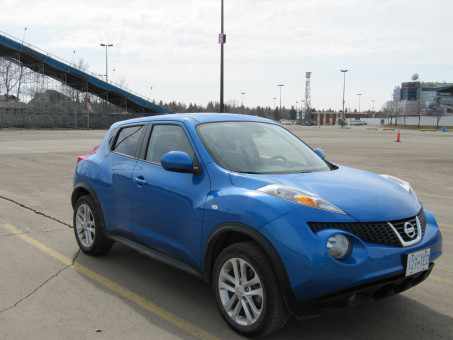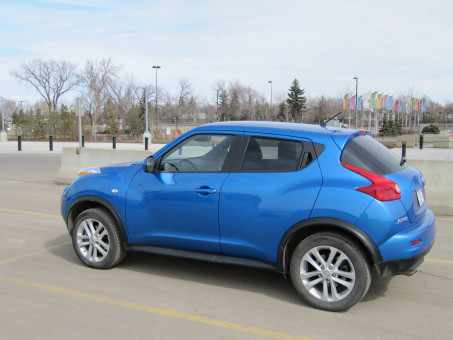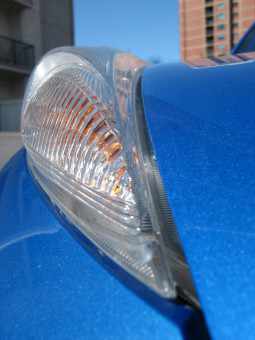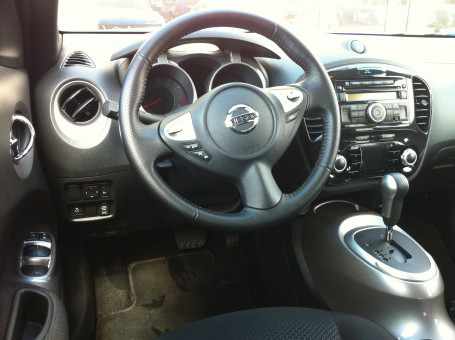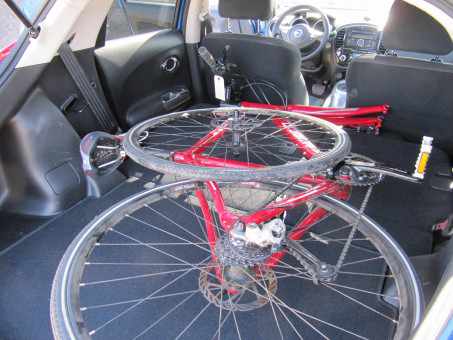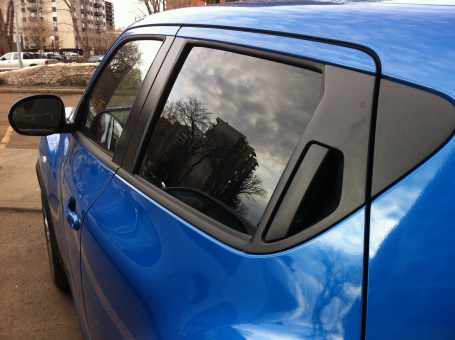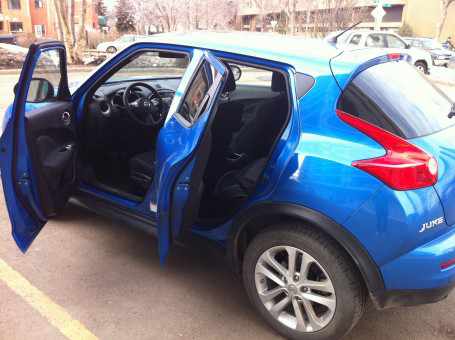The Nissan Juke is a city-sized car that doesn’t work in the city.
It’s not a big vehicle, this, make no mistake. Its dimensions should lend themselves ideally to the concrete urban jungle. But beneath the controversial looks that fill your retinae and play magic tricks on your occipital lobe are shortcomings too damning to overlook.
The taillights are inspired by the 370Z.
The Juke is forgiven its speciously swollen exterior symmetry because it’s actually based on the Versa, a fact you can’t blame it for wanting to hide – like an ashamed hipster who doesn’t want to be seen in public with her unfashionably humble parents. Inside, the materials are surprisingly competent and show just how far the game has moved on in the compact class. Compare this interior to my Mazda Protege5 and the decade between them is as clear as the desert sky. Everything is well placed and the materials, fit, and finish are commendable. The only clue as to the Juke’s unpresuming roots is the standard CD player with block-letter screen.
Further differentiating this petite crossoveur, as they probably say in Montreal, from its proletariat origins is a torque-vectoring AWD system that shifts power to the rear tires when needed and then from side-to-side under cornering. It works as advertised, always keeping the Juke tucked and tracking. The AWD system has a toggle switch by the driver’s left knee that allows for FWD, on-demand AWD, or full-time AWD settings. The on-demand setting is the Goldilocks of the three, effortlessly keeping the sudden rush of power that the 1.6T provides from overwhelming the front tires.
The 188 hp 1.6L single-turbo Direct Injection Gasoline engine is seen here for the first time and it’s a spirited elation over 3000 rpm, but struggles to motivate the 3,177 lb bulk below that mark. In between the two polar extremes is a turbo lag to rival the four-on-the-floor Porsche 930 Turbo. At the low end of the rev range, there’s the sensation that the engine is too small and too unable to impart momentum, before it suddenly transforms into a wheel-tugging sorcerer. It’s an all-or-none deal, like a Boolean action potential in a neural cell’s plasma membrane.
We often hear that smaller displacement turbocharged engines are the future because they supposedly combine small engine fuel economy with big engine power and performance. And while manufacturers would seem to concur, my time with the Juke didn’t exactly instill me with optimism. On the contrary, I couldn’t wait to get back behind the wheel of a naturally aspirated car, such was my longing for linear power delivery.
But it wasn’t just the engine, the transmission is also to blame for my opposition. Dismayingly, the AWD Juke is encumbered as standard with a CVT with 6 electronically determined ratios – the 6-speed manual being only available on FWD models.
In Eco mode, the transmission feels like the disconcerting elastic band I expected a CVT to feel like. There’s plenty of throttle input, but not a lot of progress is made as a result.
In Normal mode, the transmission uses its 6 fake gears to move things along with a sense of normalcy. Normalcy, of course, implies that you want to sink your foot half way to the floor before abruptly zinging down the road.
Sport mode makes the throttle response such that you only have to go a quarter of the way to the floor, but overall, the throttle is unbelievably lazy until the turbo finally gets enough exhaust gases from the engine to wake up.
Not big, but big enough for my bike. Some disassembly required.
This frustrating character, regardless of driving mode, belays what is otherwise an enjoyable steer. The brakes are progressive, the steering is accurate if light, and the engine actually sounds quite good once it’s up and moving. But actually getting it moving, which is what driving around town is really about, is a lesson in futility.
Then there’s the fuel economy. The ever-unrealistic National Resources Canada rates the Juke at a comical 6.3/8.0 L/100km hwy/city. On over 300 km of Highway 2, I saw 10.3L/100km and not a soupçon more. In the city, I saw as high as 14.0L/100km over a week of commuting. With gas prices for the required premium grade over $1.25/L, the costs of ownership are prohibitive compared to other compact vehicles. To put 10.3/14 L/100km hwy/city in perspective, my 350Z drinks at a rate of 8/13 L/100km hwy/city. That’s flatly inexcusable for a vehicle this size with an engine this size.
Rear door handle is out of reach of troublesome tots.
The looks of the Juke may subjective, but it firmly falls into the Third School of Design. The Nissan Juke’s not a two-door either, despite the deceptive profile. The rear door handles are placed vertically on the C-pillars, keeping them out of the prying hands of children. At this point it’s still not clear why Nissan hates children so much. Their PR department hasn’t returned my calls, although I suspect that it has something to do with the target demo (18-34 year old males who make $45k+ per year) not having children.
Since the Qazana concept in Geneva a few years back, I’ve suspected that the Juke might hit something of an urbanite sweet spot, especially considering the reasonable $28,363, as tested, price. But it just plain misses the mark with the ponderous transmission, premium fuel thirst, and Boolean engine.
Ever the optimist, I’m still holding out hope for the manual-equipped version.
CarEnvy Rating: 6.5/10
[Photo credits: author]

